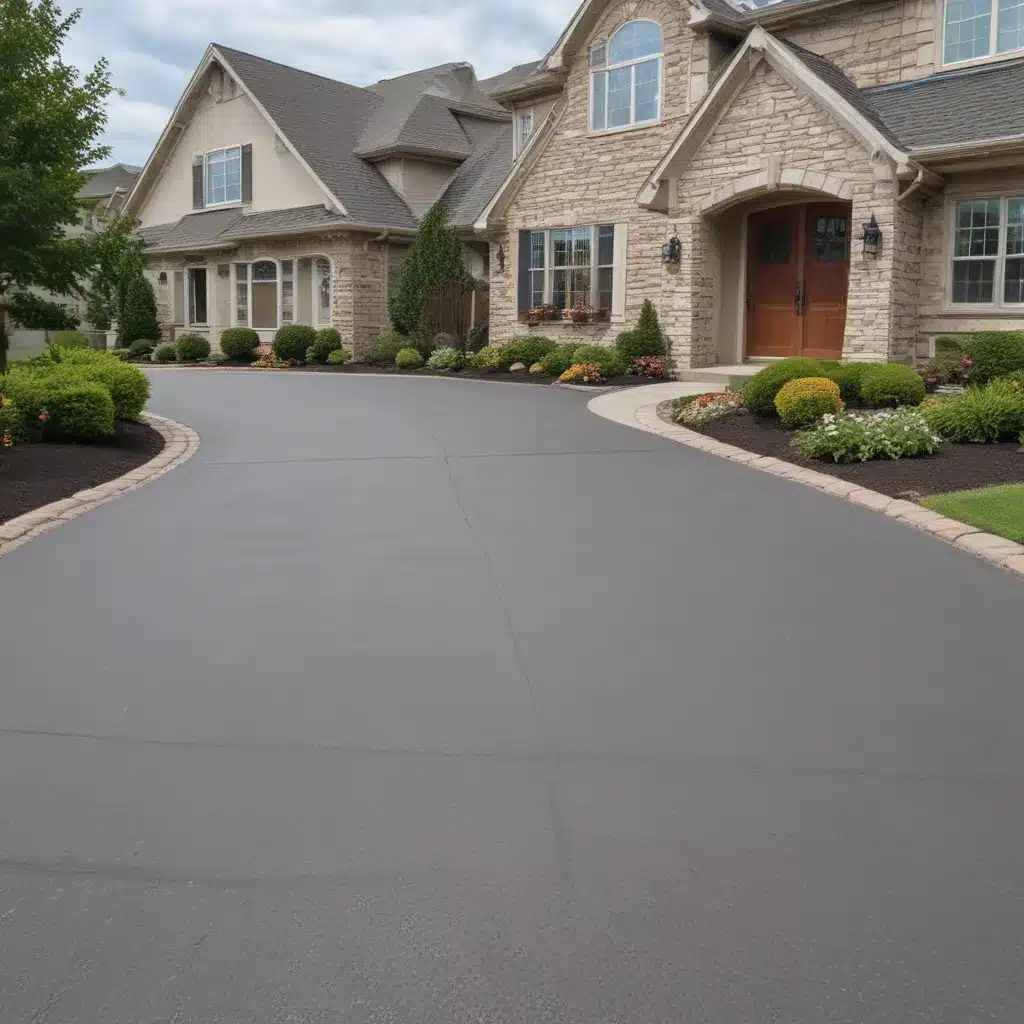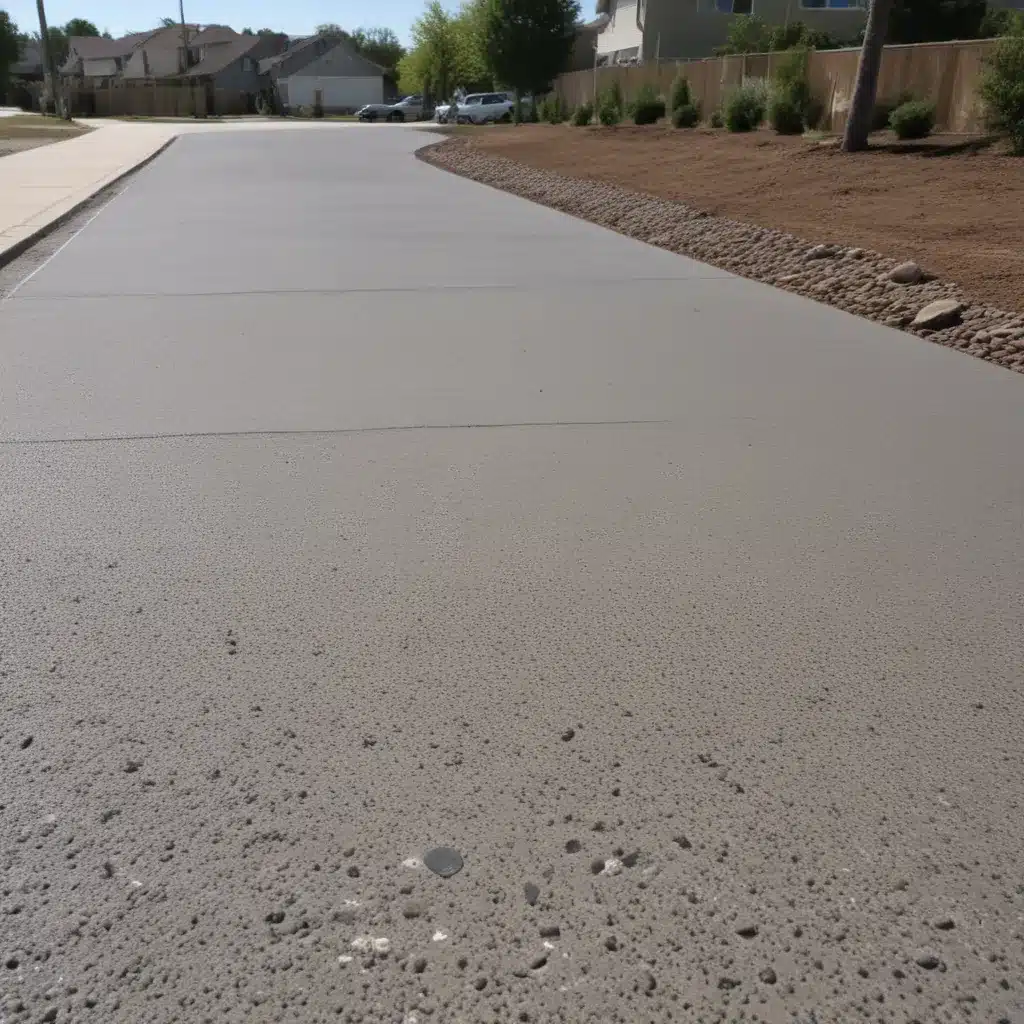Understanding the Causes of Concrete Driveway Cracks
Ah, the dreaded concrete driveway crack – that unsightly blemish that can turn even the most well-manicured property into an eyesore. As a homeowner, I’ve certainly had my fair share of these frustrating fissures, and I know the struggle all too well. But fear not, my friends, for today we’re going to dive deep into the underlying causes of these driveway demons and uncover the secrets to keeping your concrete smooth and crack-free.
Let’s start with the basics, shall we? Concrete driveways are built to last, but they’re not invincible. In fact, they’re quite susceptible to a variety of environmental and structural factors that can lead to those pesky cracks. One of the primary culprits is the constant ebb and flow of temperature and moisture. As the ground expands and contracts with the changing seasons, the concrete above it is forced to adapt, and sometimes it just can’t keep up. The result? A network of cracks that can grow larger and more unsightly over time.
But temperature and moisture aren’t the only villains in this concrete conundrum. The very composition of the concrete itself can also play a role. If the mixture wasn’t properly formulated or the curing process wasn’t executed with precision, the resulting driveway may be more prone to cracking. And let’s not forget about the impact of heavy loads – whether it’s from your car, a delivery truck, or even a particularly enthusiastic game of driveway basketball, the constant stress can take its toll on the concrete’s structural integrity.
Identifying the Different Types of Concrete Driveway Cracks
Now that we’ve covered the general causes, let’s dive a little deeper and explore the various types of concrete driveway cracks. After all, not all cracks are created equal, and understanding the differences can be crucial in developing an effective repair strategy.
First, we have the ubiquitous linear crack – a straight, thin fissure that can run the length of the driveway. These are often a result of the aforementioned temperature and moisture fluctuations, and they can be a real eyesore, but they’re generally not too structurally concerning.
Next, we have the diagonal crack – a crack that follows a diagonal path across the driveway. These can be a bit more worrisome, as they may indicate a more significant underlying issue, such as soil settlement or poor load distribution.
Then there are the radial cracks – these are the spider-web-like patterns that can spread out from a central point, often around a drain or other driveway feature. These can be a sign of a more serious problem, such as a shifting foundation or poor concrete compaction during the initial pour.
And let’s not forget the alligator cracks – these are the interconnected, web-like patterns that can make your driveway look like the scaly skin of a reptile. These are typically a sign of advanced concrete deterioration and may require more extensive repairs.
Preventing Concrete Driveway Cracks
Okay, now that we’ve covered the various types of cracks, let’s turn our attention to prevention. After all, an ounce of prevention is worth a pound of concrete repair, am I right?
One of the most important steps in preventing concrete driveway cracks is proper installation. This means ensuring that the soil beneath the driveway is properly compacted and graded, and that the concrete mix is formulated to the right specifications. It’s also crucial to allow the concrete to cure fully before subjecting it to heavy loads.
But prevention doesn’t stop there. As the driveway ages, it’s important to keep an eye on it and address any issues before they have a chance to turn into full-blown cracks. Regular cleaning and sealing can help protect the concrete from the elements, while strategic crack-filling can nip smaller fissures in the bud before they have a chance to grow.
And let’s not forget the power of Mother Nature herself. Strategically placing trees or shrubs can help to stabilize the soil and reduce the impact of temperature and moisture fluctuations, effectively minimizing the risk of concrete cracking.
Repairing Concrete Driveway Cracks
Alright, now we’ve covered the causes and prevention of concrete driveway cracks, but what happens if you’ve already got a few unsightly fissures on your hands? Don’t worry, my friends, there are plenty of repair options at your disposal.
One of the most common and cost-effective solutions is crack filling. This involves cleaning out the crack, applying a flexible sealant, and smoothing it out to match the surrounding concrete. This can be a great way to address smaller cracks and prevent them from worsening over time.
But what if the cracks are a bit more extensive? In that case, you may need to consider partial resurfacing. This involves removing a section of the damaged concrete and replacing it with a fresh, new pour. It’s a bit more involved than crack filling, but it can be a great way to restore the structural integrity and visual appeal of your driveway.
And for those truly stubborn, widespread cracks, a full driveway replacement may be the way to go. This is a more extensive and costly process, but it can be the best solution for driveways that have reached the end of their lifespan. Plus, it’s a great opportunity to upgrade to a newer, more durable concrete mix or even explore alternative materials like pavers or stamped concrete.
Choosing the Right Driveway Services Provider
Now, I know what you’re thinking – “All of this sounds great, but how do I actually go about getting my driveway repaired or replaced?” Well, my friends, that’s where the right driveway services provider comes in.
When it comes to finding a reputable and reliable company to tackle your concrete driveway woes, it’s important to do your research. Look for a provider with a proven track record of quality work, responsive customer service, and fair pricing. Don’t be afraid to ask for references or read online reviews to get a sense of their reputation.
And let’s not forget the importance of communication. A good driveway services provider will take the time to understand your specific needs and concerns, and work with you to develop a customized solution that fits your budget and timeline. They should be transparent about the process, provide you with a detailed estimate, and keep you informed every step of the way.
At the end of the day, repairing or replacing a concrete driveway is a significant investment, so you want to make sure you’re working with a company you can trust. Take the time to find the right fit, and you’ll be well on your way to a smooth, crack-free driveway that will be the envy of the neighborhood.
Conclusion: Embracing the Journey to a Crack-Free Driveway
Phew, well there you have it, folks – a deep dive into the world of concrete driveway cracks. From understanding the underlying causes to exploring the various repair options, I hope I’ve been able to provide you with a comprehensive roadmap to keeping your driveway in tip-top shape.
Now, I know this journey might not always be smooth (pun intended), but with the right knowledge and the right driveway services provider on your side, you can conquer those cracks and reclaim the pristine, crack-free glory of your outdoor oasis.
So, what are you waiting for? Grab your magnifying glass and start inspecting that driveway of yours. Who knows, maybe you’ll even discover a hidden talent for concrete crack detective work. Or, if you’d rather leave it to the professionals, feel free to reach out to our team – we’d be more than happy to lend a helping hand (and a few too many bad concrete puns).





